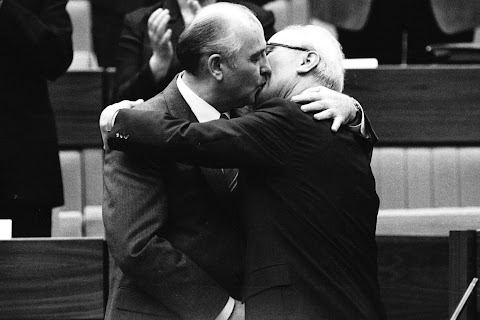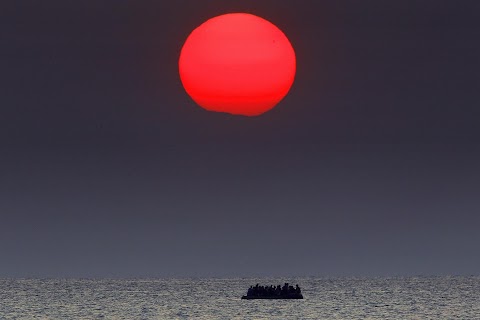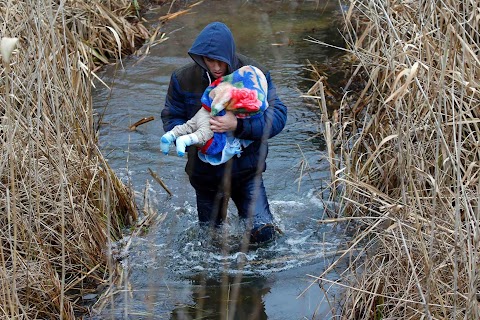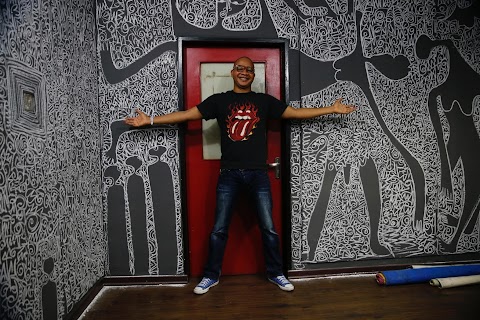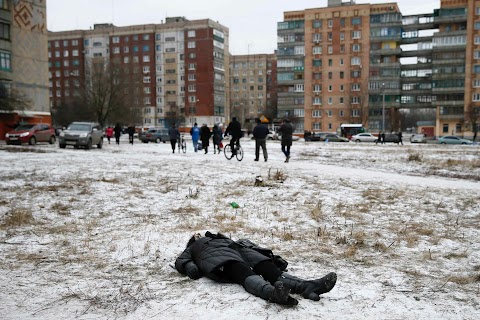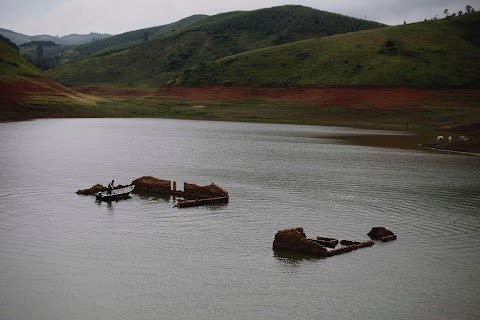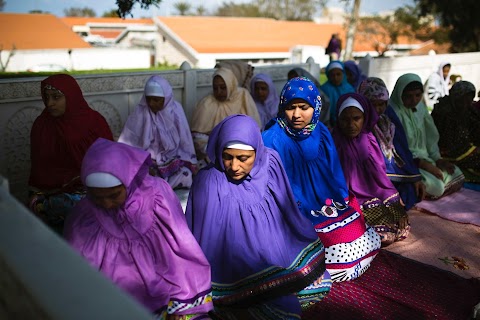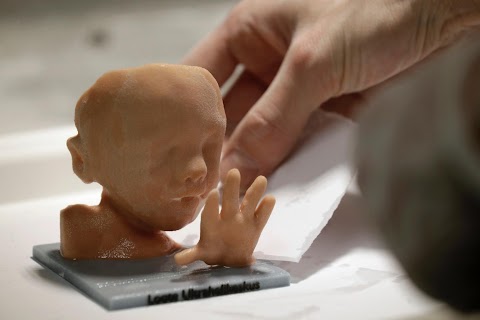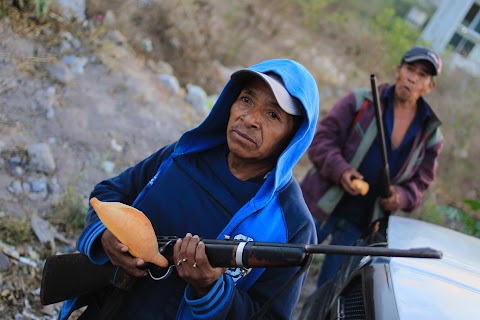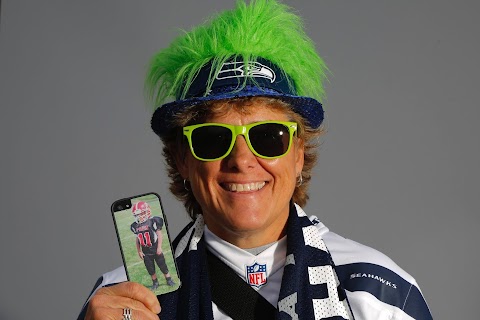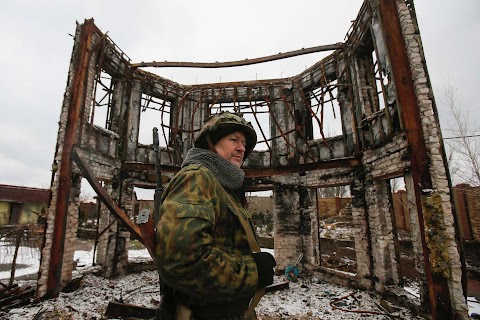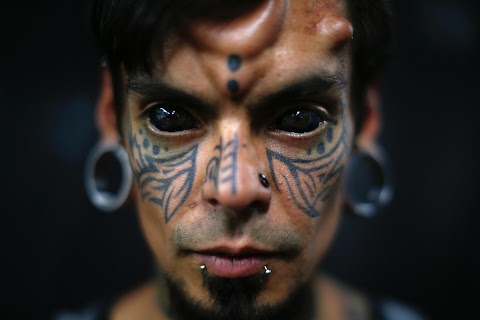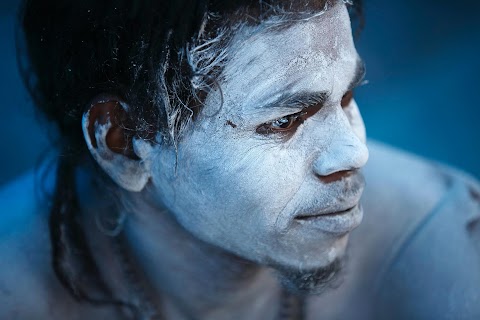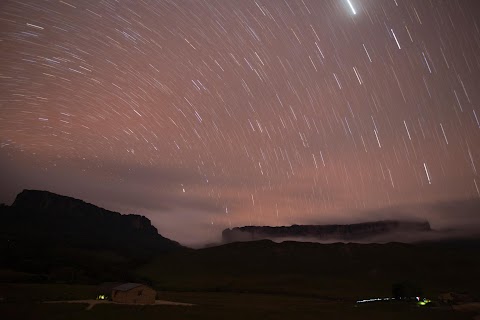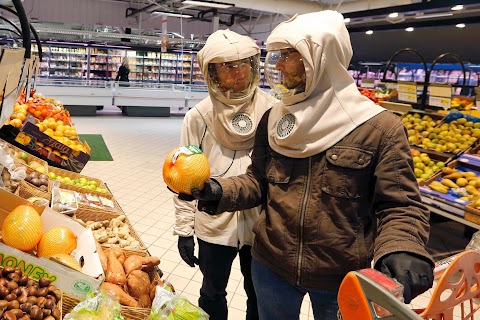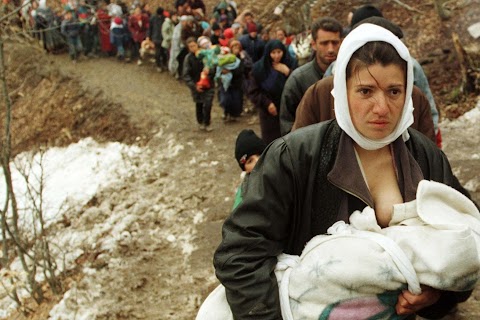
30 years of Reuters Pictures: Part one
 Damir Sagolj
Damir Sagolj
Reuters multi-award winning photographers are celebrated here in a three part retrospective on the 30th anniversary of the service's launch. They have captured dramatic images illustrating the human tragedy of natural disaster and war as well as the fallout of economic events across the continents, creating iconic images, recognised around the world.
Above, an ethnic Albanian woman feeds her baby as she and another 2,000 refugees, displaced by the war in Kosovo, are allowed to enter Macedonia in the mountainous region near the border crossing of Blace.

Bucharest's residents protect themselves from the crossfire between an army tank and pro-Ceausescu troops during clashes in the Republican square in Bucharest.
Reuters photographer Charles Platiau: On December 22, 1989, my mind was still full of memories of covering the fall of the Berlin Wall. I was ready to celebrate Christmas with my family, but the Romanian communist dictator Nicolae Ceausescu changed my plans.
My boss and I were watching Ceausescu leave Bucharest by helicopter live on TV. I rushed to the airport and was lucky to board a flight chartered by the Medecins du Monde humanitarian organisation.
We landed at in Bulgaria and took a taxi to the Romanian border. Luckily the border was not closed and I hitch-hiked a ride to the capital on a truck. At noon I simply took the metro to arrive in downtown Bucharest in the middle of heavy gunfire. No helmet, no bullet proof jacket, only the enthusiasm of youth and the joy of witnessing a historical event: a revolution.
With my 300 mm 2.8 and an extender, I shot residents protecting themselves in the crossfire between an army tank and pro-Ceausescu troops during clashes in Republican square. No time for more pictures, just enough time to process and send a lone colour print to reach Sunday newspaper deadlines.
There were only two phone lines at the hotel, and scores of reporters arriving to file their stories. I kept the phone line open and did not hang up for 10 days in order to transmit pictures and stories.
The picture made the front page of most international papers. It was not the best picture of the revolution but one of the first colour pictures to hit the media market. It reminds me how hard it was to get around with cases of heavy equipment (80 kg of gear including an enlarger, photo paper, a transmitter, a typewriter).

Romanian parents carry a small casket and cross as they arrive at a Bucharest hospital to collect the body of their dead baby.
Reuters photographer Radu Sigheti: I found out that there is a ward at a hospital in Bucharest where children with HIV positive were hospitalised. I thought this is a story worth pursuing, at the time I had no idea what AIDS meant and I wanted to find out, thinking it would make a good story.
I went there and took pictures of the children, aged between one to five years old but many looking like they were over 100; frail and helpless in their beds. One had died a day before.
The smell of chloride was punching. At the time they used to spread it around that ward thinking it would keep it sterilised. That smell and the sight of those children, there were about 20-30 hospitalised, made me anxious and after a while I decided to leave as I could not stand it anymore.
As I left with a friend we found his car, parked outside the hospital, with a flat tyre. He started working to replace it then at one moment I heard steps behind me.
When I turned I saw this picture and I knew why they were there, for the child who died of AIDS a day before. I grabbed the camera and I took one shot. In the moment the couple heard my shooter noise they raised their eyes and looked straight at me. I took one more frame and I put the camera down.
The look in their eyes said everything about their sorrow. I could not take any more pictures; I just followed them with my eyes as they slowly entered the hospital yard.

Oil fire fighters from Boots and Coots cut off a section of piping to help them put out one of the first oil well fire.
Reuters photographer Russell Boyce: The workers were trying to contain the flames with a shield and tube when a blast of heat blew the worker’s helmet off.
The fire seems to dwarf the men, who look almost helpless as they struggle against what looks like the flames of hell.
To get access to the fires we had to drive through a lake of oil created by the wells. Once we got there, the heat was so intense that we could not get close. A slight change of wind and we'd have been covered in choking fumes.
It was 1991, the pre-digital age, and I was using Nikon F3P. To transmit the picture I had to return to my hotel room, process the film, make a colour print, stick a paper typed caption onto the print and use a drum transmitter to send the image.
Initially we transmitted pictures on our satellite phone, which was as big as a large trunk suitcase. It was so heavy, two people had to carry as it.
We had a generator running in my room as there was no power in Kuwait City. My room always smelt of fumes from the generator, photographic chemicals and smoke from the oil fires.
There was only water for an hour or so each day, so processing film was difficult. I would fill the bath with water when it was on, so that I always had the water necessary to process film.
The picture took 21 minutes to transmit, with each separation, magenta, cyan and yellow, taking seven minutes.

Frantic Kurdish refugees struggle for a loaf of bread, during a humanitarian aid distribution in the mountains of Isikveren at the Iraqi-Turkish border.
Reuters photographer Yannis Behrakis: At the end of the first Iraq war about 1.5 million Kurds were fleeing in panic trying to escape from forces loyal to Saddam Hussein.
About 600,000 of them fled to Turkey but half of them were stranded in the mountains at the Iraqi-Turkish border.
I hitch-hiked a ride on a tractor pulling a cart full of bread to feed the stranded Kurdish refugees atop the snow capped mountains at the border.
As the tractor made its way slowly through the dangerous dirt road, it was attacked by hundreds of hungry refugees who fought against each other and the aid workers.
The men I was riding with tried in vain to stop the refugees from taking the bread but the refugees were absolutely desperate and the aid workers gave up.
Getting up the mountain to cover the story was extremely difficult. I remember leaving the hotel every morning at 4 am in order to reach the bottom of the mountain two-and-a-half hours later.
Then I hitchhiked my way on either a tractor carrying bread or on a snow-removal vehicle clearing the road. Once, my hands were so cold they stuck to the snow-removing vehicle.
Pictures like this put pressure on the Turkish government to allow proper humanitarian aid to reach the refugees.
It also alerted the international community about the tragic events in this part of the world and received very good play in what was the biggest story in the world at the time.
It was the first time I was covering a humanitarian crisis and I was stunned with the cruelty some people demonstrated towards unprotected humans.
I also understood that photojournalism is a very strong medium that can make a difference and help people in need.

Petrol sprays on the Formula One racing car of Netherlands Jas Verstappen seconds before the car and the crew of Benetton Ford caught fire during refuelling at the German F-1 Grand Prix in Hockenheim.
Reuters photographer Joachim Herrmann: I was covering the F1 race in Hockenheim, Germany and was one of the photographers on the pit wall during the race.
Benetton's Jas Verstappen's team had problems while refuelling his car: petrol was spraying all over the place before the car caught fire. The fire was extinguished quickly and the driver suffered minor injuries.
It was the first time such an accident had occurred and I got all the right moments: the spraying petrol, the fire, the driver getting out of the car. I used a Canon with a 2.8 70/200 mm lens.
The picture got wide, global play and it is one of the pictures I am known for. People still mention it in conversation, even though it was taken in 1994.
It was challenging not to overshoot because on film you only have 36 frames. I was not sure how many frames I still had, so I had to shoot frame by frame and get all on that one roll of film.
What's more, I couldn't return to the pit wall after leaving, which meant I had do find a way to ship my film to my editor - it worked perfectly with the help of an official.

An Albanian man carrying a child staggers forward through a blizzard of sand kicked up by a US Marine CH53 Super Stallion helicopter as it lands at Golame beach near the port of Durres.
Reuters photographer Yannis Behrakis: I was covering the unrest in Albania following the pyramid scheme failures.
Albanian civilians had lost $1.2 billion and Albania descended into civil disorder and violence. The government was toppled and 2,000 people were killed.
My late colleague Kurt Schork and I were the only members of the press staying in a hotel where the armed owner protected us from bandits who would rob every journalist who dared to come alone to cover the story.
The owner insisted on placing Kalashnikovs and hand grenades in the closets of our rooms "to protect ourselves if needed," as he said.
On March 16 we drove to Golame beach where two U.S. helicopters had landed, kicking off a blizzard of sand as hundreds of desperate Albanians gathered in the area, hoping to get a lift out of the country.
Blinded by the sand I shot a few pictures when an Albanian man holding his child ran towards the helicopter. About a dozen U.S. Marines jumped off the Super Stallion and pointed their M-16 assault rifles at the Albanians.
The man with the child was begging the soldiers to let him in onboard. The Marines were clearly surprised by the crowd and asked me what was going on, and if I saw any foreigners trying to leave.
I explained that these people were just desperate and wanted to leave Albania, and that they thought the helicopters were there to take them to safety.
The situation was getting out of control and a few warning shots were fired and people were beaten back with rifle butts.
The fact that we decided to take the risk and stay in Durres paid off. Papers all over the world ran these pictures on their front pages.
Slideshow

Former U.S. President Ronald Reagan shakes hands with former Soviet leader Mikhail Gorbachev at their first meeting in Geneva, Switzerland.

An injured fan is carried by a friend after a wall collapsed before the European Cup final between Juventus and Liverpool at the Heysel stadium in Brussels. Thirty nine people died in the disaster and a further 600 were injured.

Ben Johnson wins the gold medal in the 100m sprint at the Seoul Olympics. Behind him are Calvin Smith, Linford Christie and Carl Lewis. Johnson later lost the medal when he tested positive for steroids.

Bomb damage is seen in the City of London after two blasts ripped through buildings in the area. Dozens of people were injured in the explosion caused by IRA bombs.

Nelson Mandela accompanied by his wife Winnie, walks out of the Victor Verster prison near Cape Town after spending 27 years in jail.

U.S. President Bill Clinton gestures as Israeli Prime Minister Yitzhak Rabin and Palestine Liberation Organisation (PLO) leader Yasser Arafat shake hands after the signing of the Israeli-PLO peace accord at the White House.

A young Rwandan refugee who traveled from Bukavu with several thousand others shivers in the early morning. He was part of a group of some 20,000 refugees who made their way into Goma.

A body is removed from the wreckage after a bomb went off in Nairobi. The bomb, which killed more than 250 people and injured 5,000, was aimed at the U.S. embassy.
